How to stretch and why not to skip it?
| Vendula KosíkováStretching is an important part of any training, if not the most important one. Yet we tend to skip it, do it sloppily or reduce it to minimum. And that’s a shame. In this way we are depriving ourselves of a lot of benefits. What can 10 minutes of stretching bring us and what should it look like? We asked running and scootering trainer Michal Kulka.
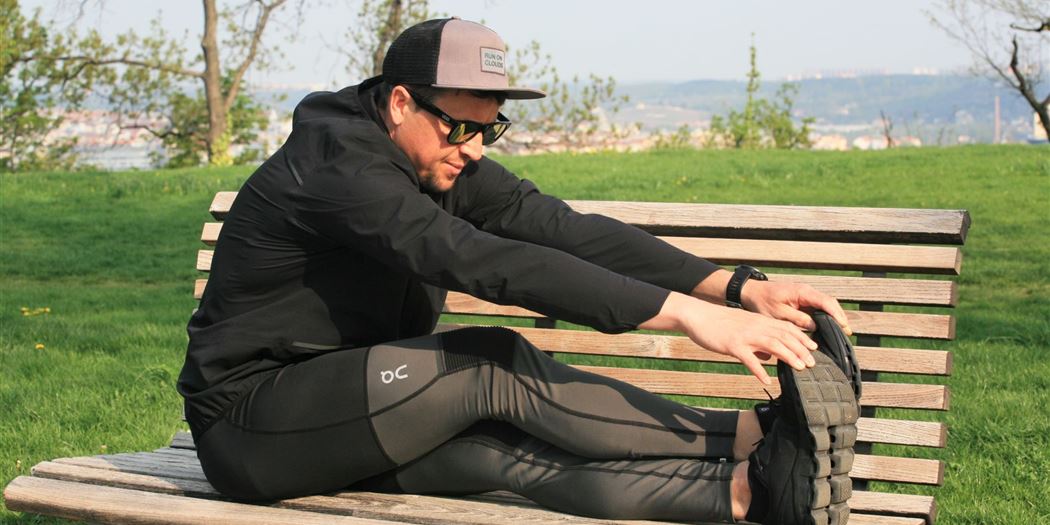
The benefits of stretching
Stretched and relaxed muscles do not hurt
If we stretch regularly, a permanent improvement in flexibility occurs and the range of motion increases. At the same time, blood flow in the muscles increases, they become firmer and more sculpted.
“Just like professional athletes, we, too, should prepare our bodies for performance first, whether it be a training session, a fitness ride or a trip to work,” explains Michal Kulka.
“Stretching protects us from pain, injury, shortening of muscles and stiffening of joints. It increases the range of motion and therefore performance as well. It strengthens the core and significantly slows down the process of aging. In addition, regular stretching makes our muscles and body leaner.
General principles:
Perform stretching exercises slowly and smoothly, never go through pain and only go into a comfortable stretch.
Stay in each position for at least 10 to 20 seconds. Smaller muscles need less time, larger ones need more time to stretch and relax.
Breathe calmly, with the inhale gently lengthen the spine, prolong it. As you exhale, relax – release tension in the jaw, face, neck and throat. Concentrating on the breath, which helps to release tension in the muscles, is very important when stretching.
Change sides and repeat each exercise at least twice.
If you suffer from hypermobility, be careful not to go into a minus position (bending to the opposite side) when stretching the joints.
Stretching is good for us mentally, too. By shifting our attention to the body, we detach our mind from everyday concerns and casually tune ourselves in to a new activity.
We should only need 10-15 minutes depending on the type of training that will follow. Sprints, fast ride and slalom require longer preparation than lower intensity activities such as endurance riding.”
Stretch only warmed-up muscles
Ideally composed training
- Warm up – initial riding at a leisurely pace until you feel warm or until you begin to sweat
- Stretching – starting by stretching the most burdened parts of the body, ideally for 10 to 15 minutes, but even 5 minutes is better than nothing
- Perfecting technique
- The training itself to enhance performance
- Relaxation – final stretching and relaxation similar to yoga
“Although we put stretching at the beginning of the training, it is necessary to warm up to “operating” temperature before we start. The ideal way is to warm up with a light ride (10 to 15 minutes), to promote blood circulation in the muscles until we feel thermal comfort or until we begin to sweat.”
Do not go through pain
Perform stretching exercises slowly and smoothly, never going through pain, but only to a comfortable stretch.
Hold each position for at least 10 to 20 seconds, smaller muscles need less time, larger muscles need more time to stretch and relax. Breathe calmly and as you exhale, move the stretch a little further. Repeat each exercise at least twice.
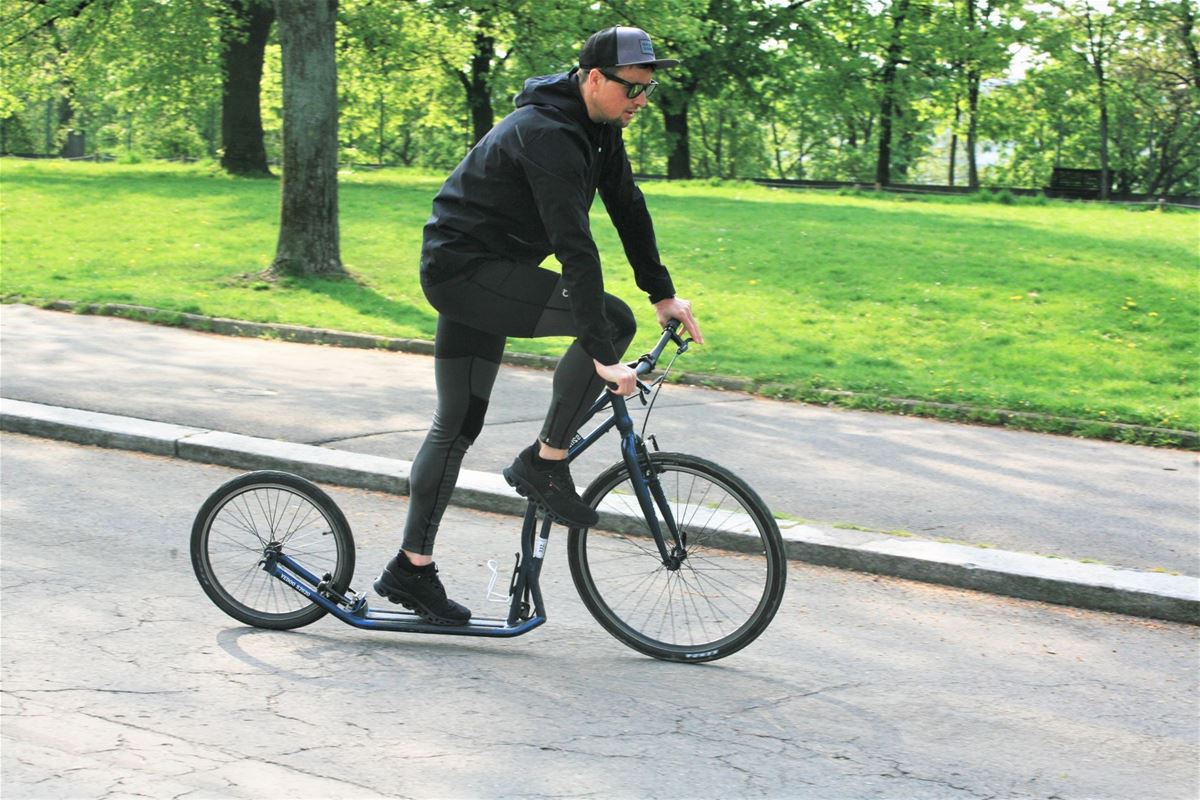
Stretching the calf muscle and the Achilles tendon
This exercise increases the range of motion in the ankle while stretching the calf muscle, the Achilles tendon and toe flexors. Lower the heel of the stretched leg and straighten the knee. The pelvis aims forward, the knee of the standing leg is bent. Hold for 20 seconds and then switch legs.
If you suffer from hypermobility, make sure you do not over-straighten the knee, which would bend backwards and put you in an unfavourable position.
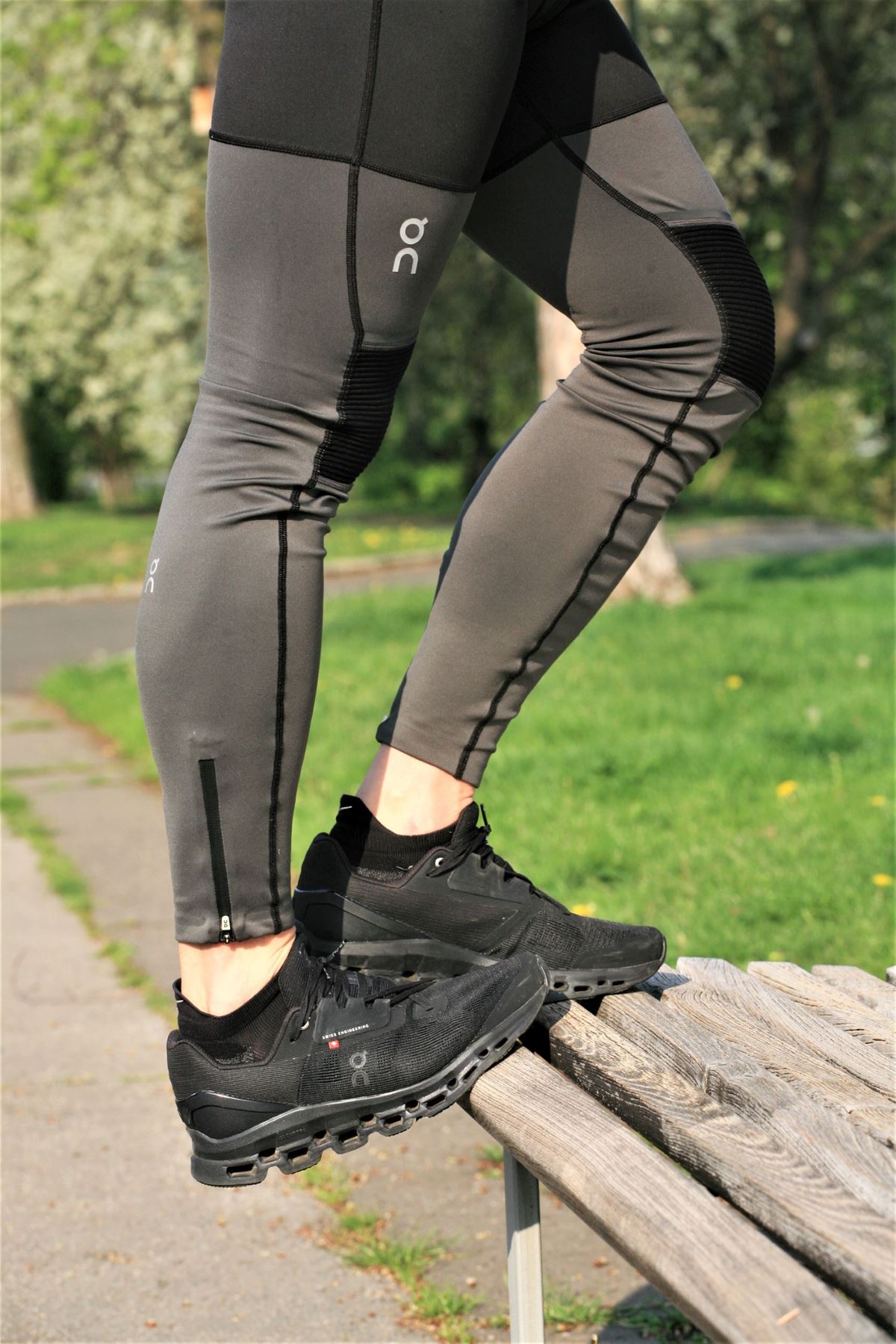
Stretching the muscles on the back side of the thigh
This exercise stretches the muscles on the back of the thigh and relaxes the lumbar spine. Place your right foot on a bench, grab the toe of your shoes or ankles with your right hand; if you can’t reach them, extend your arms with a sweatshirt, scarf, etc., and place them under your foot. You can put your left hand on your knee.
We try to bring the chest to the knee so that the cervical vertebrae are in natural extension of the spine. Do not push the chin forwards, tilt the head backwards or hide your neck between the shoulders. Switch sides after about 20 seconds.
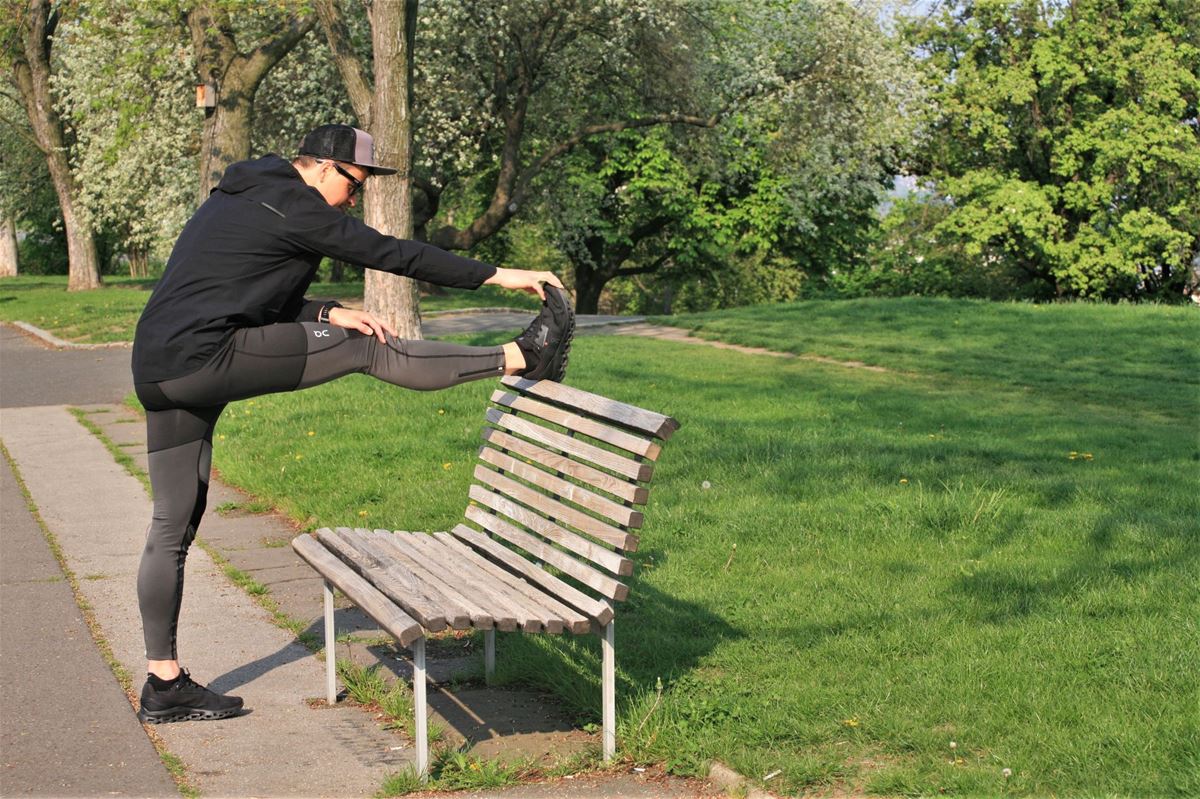
You can also stretch the muscles on the back of your thighs, the lower back and calves with a similar exercise on the bench while sitting. As with the previous exercise, we think about the natural extension of the spine and do not to push the shoulder of the stretched hand forward.
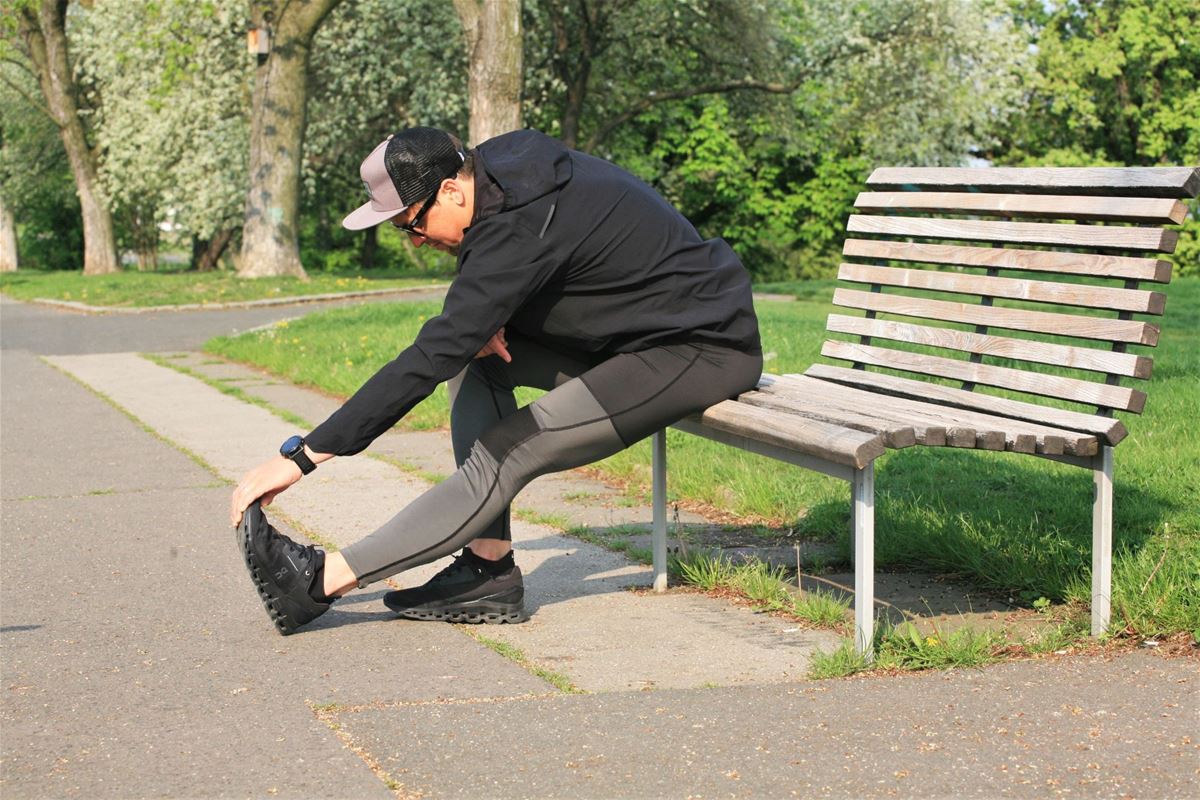
Stretching the upper half of the body
This exercise will stretch not only the lower back and buttocks, but also the chest, shoulder blades and arms. Bend over, extend your arms and place them on the bench. Then stretch the spine and knees and breathe calmly.
Keep a right angle between the legs and the torso. Your face faces downwards and your spine is in natural extension. Your shoulders are wide and open. Gently pull the abdomen towards the spine to support the hips and keep them from collapsing in the stretch. You can bend your knees to stretch your upper body more.
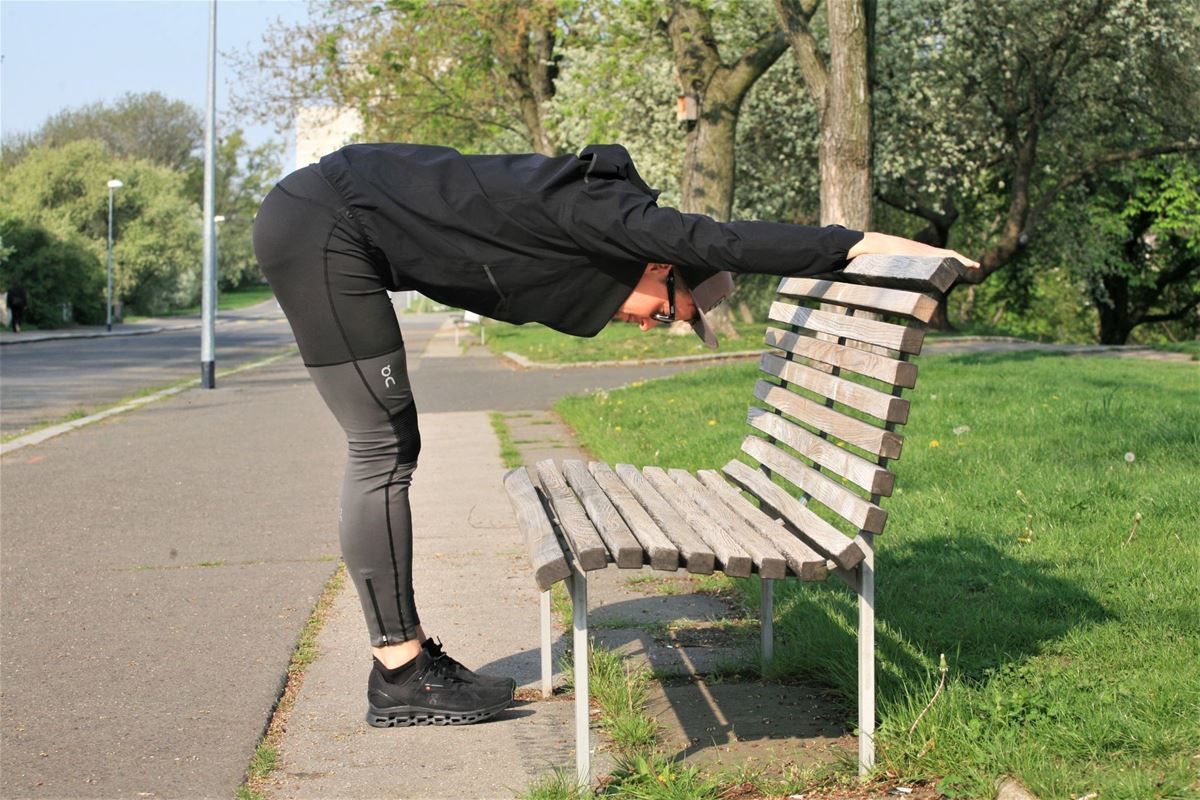
Stretching the hip flexors
Stretching the hip flexors is especially important. Shortened flexors cause poor pelvic alignment and sagging hips, leading to other problems such as back, knee and hip pain.
Bend your left leg and place it on a bench, with your hands on the backrest, and bend your standing leg at the knee. During this exercise we make sure that the pelvis is in a neutral position – this means that both hips, especially bony projections of the hipbone, remain at the same height and the pelvis does not tilt to either side or downwards (which happens especially with the stretched leg). Slightly activate the abdomen to support the lower back and prevent it from sagging.
Switch sides after about 20 seconds.
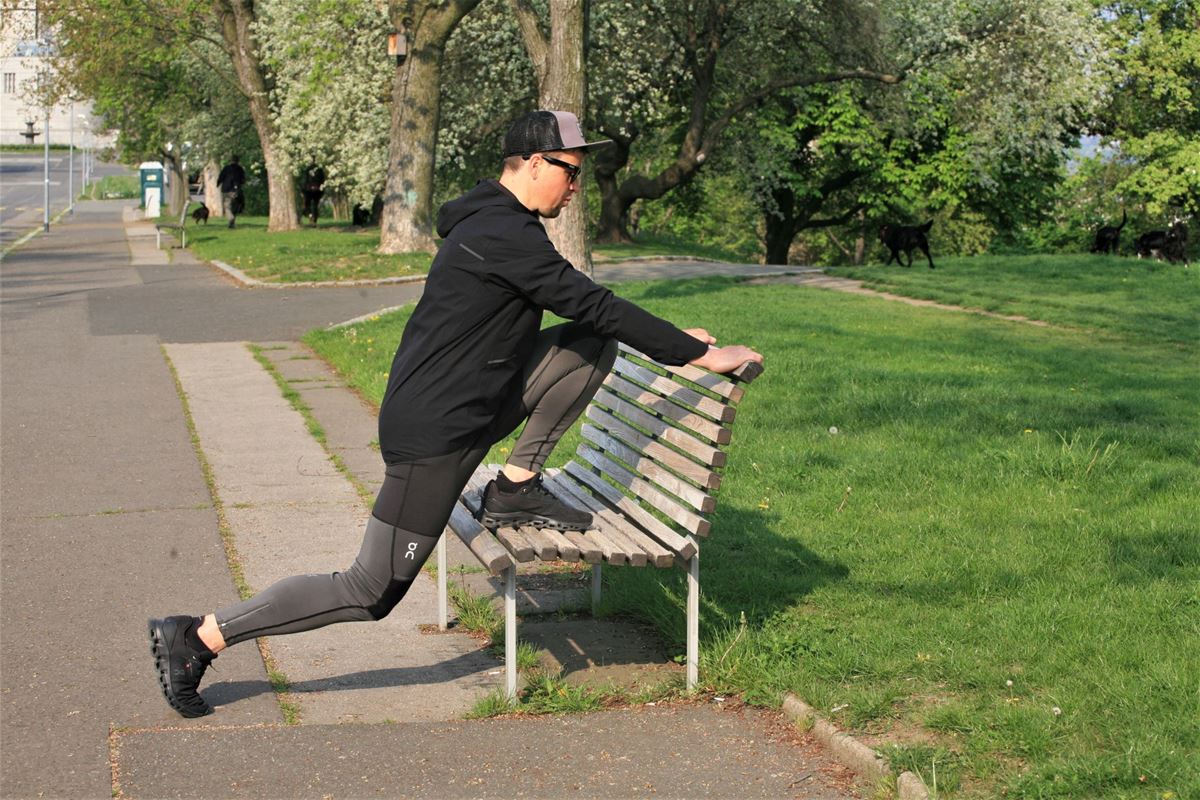
Stretching the buttocks and posterior thigh muscles
This exercise will stretch and relax the gluteal muscles nicely and increase the range of motion of the hip joint.
Stand on one leg, bend the other leg at the knee and pull it towards the chest. Pay attention to an upright posture and keep out head in extension of the spine.
Switch legs after about 20 seconds.
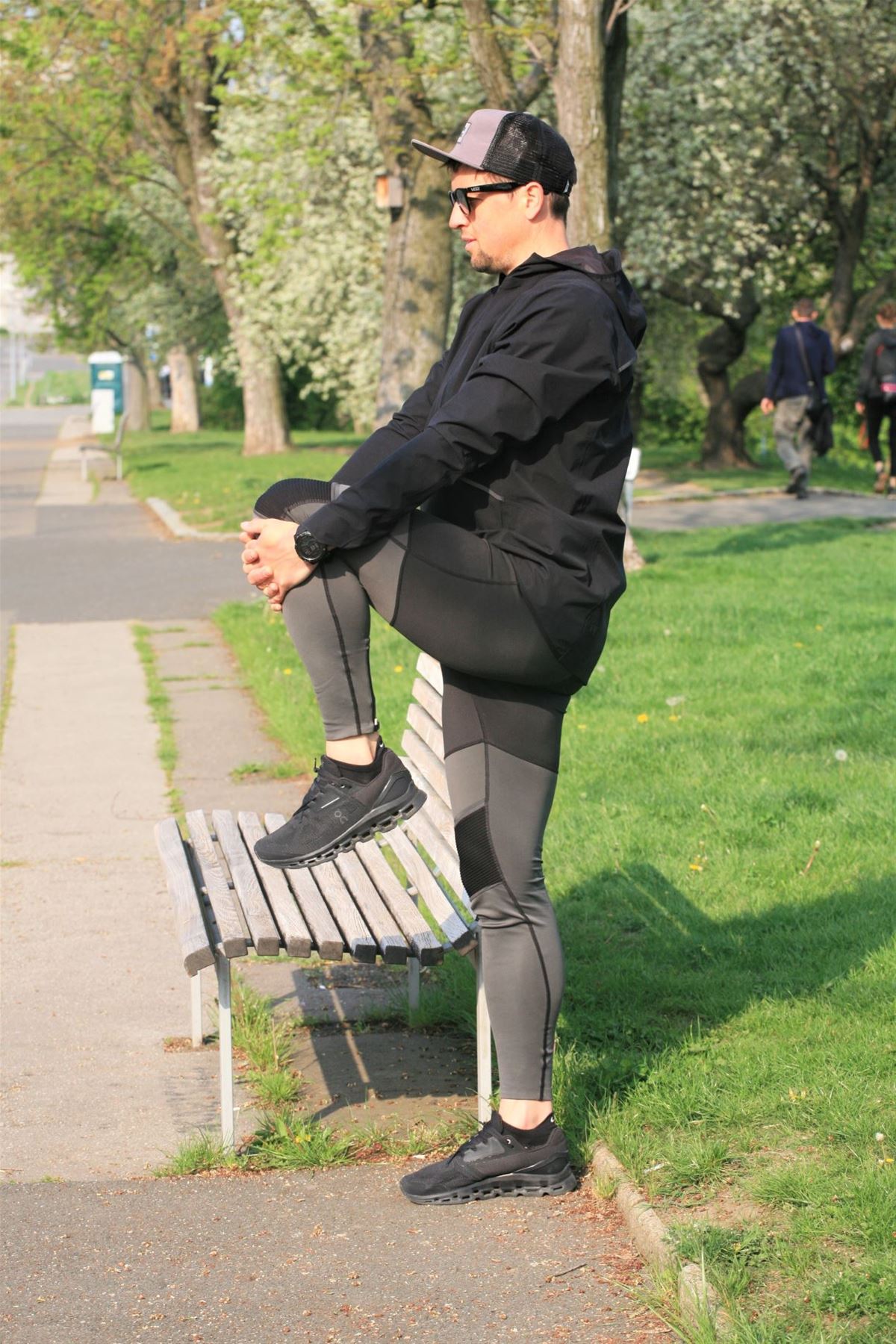
Stretching the quadriceps femoris muscle
A simple but very effective exercise to stretch the quadriceps femoris and release tension on the front side of the thigh.
Stand up straight. Grasp the instep of the left leg with the left hand and pull the heel towards the buttocks. Try to keep an upright posture, knees pelvis and shoulders in one axis, the tailbone towards the heels. Keep your knees together as much as possible. Switch legs. Repeat the exercise twice.
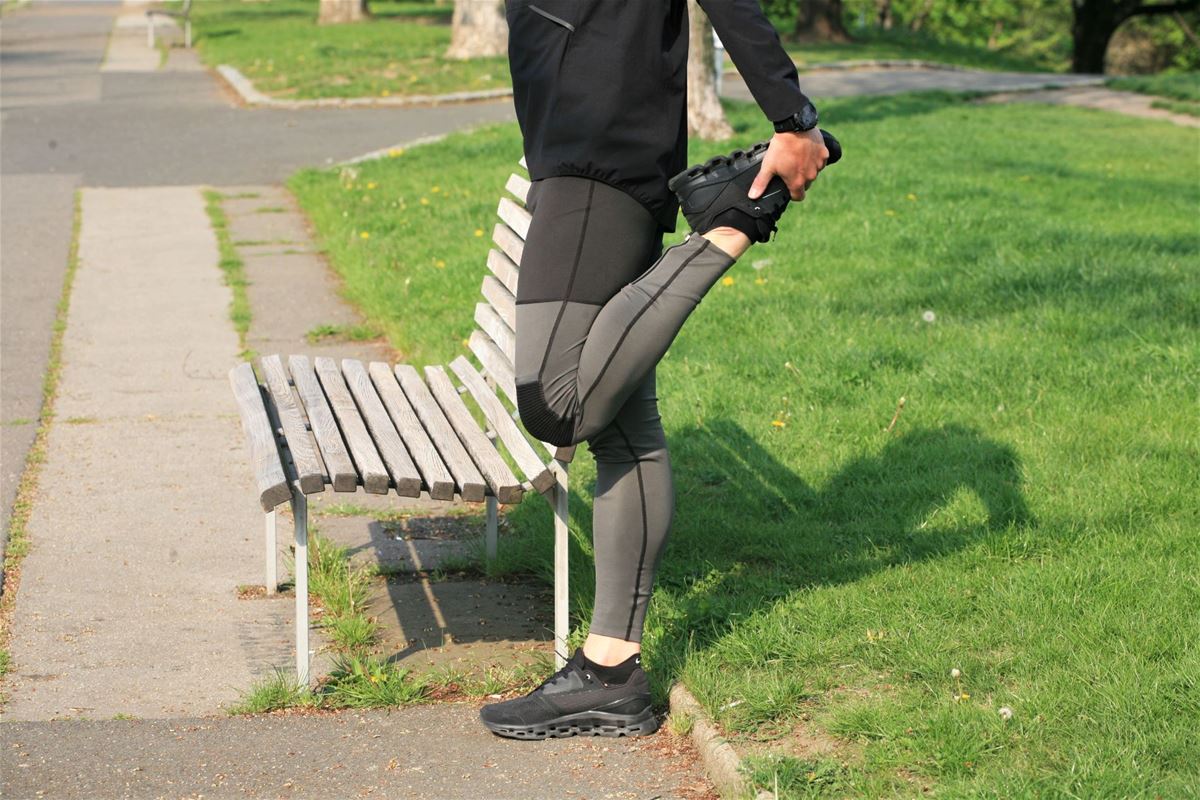
Stretching of hamstrings and the lower back
This exercise serves to stretch the hamstrings, finger flexors, the lower back and arms.
Sit on a bench, stretch your legs, bend over and grab your calves, ankles or, if you can, the tops of our feet with your hands. Try to keep your shoulders broad, your chest open and your neck relaxed. Aim your gaze downwards so as not to tilt the head backwards during the exercise. Again, you can extend our arms using a sweatshirt or scarf.
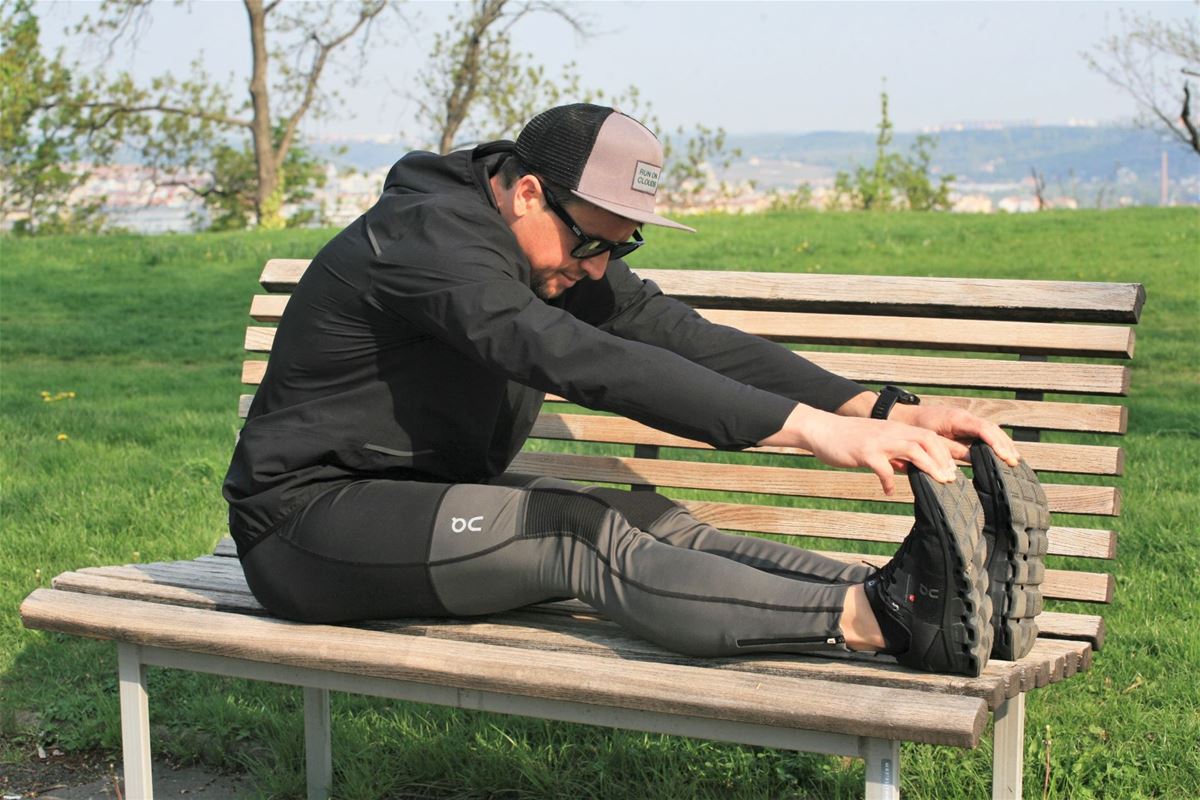
Stretching the instep and muscles on the front side of the thighs
The instep of scooter rider needs care, too. Sit on your heels, grab your ankles and while maintaining the natural extension of the spine, bend your head slightly backwards. Aside from your instep, you will also stretch the muscles on the front of your thighs well. We only need to make sure that our heels do not roll sideways and stay right under the ischial bones.
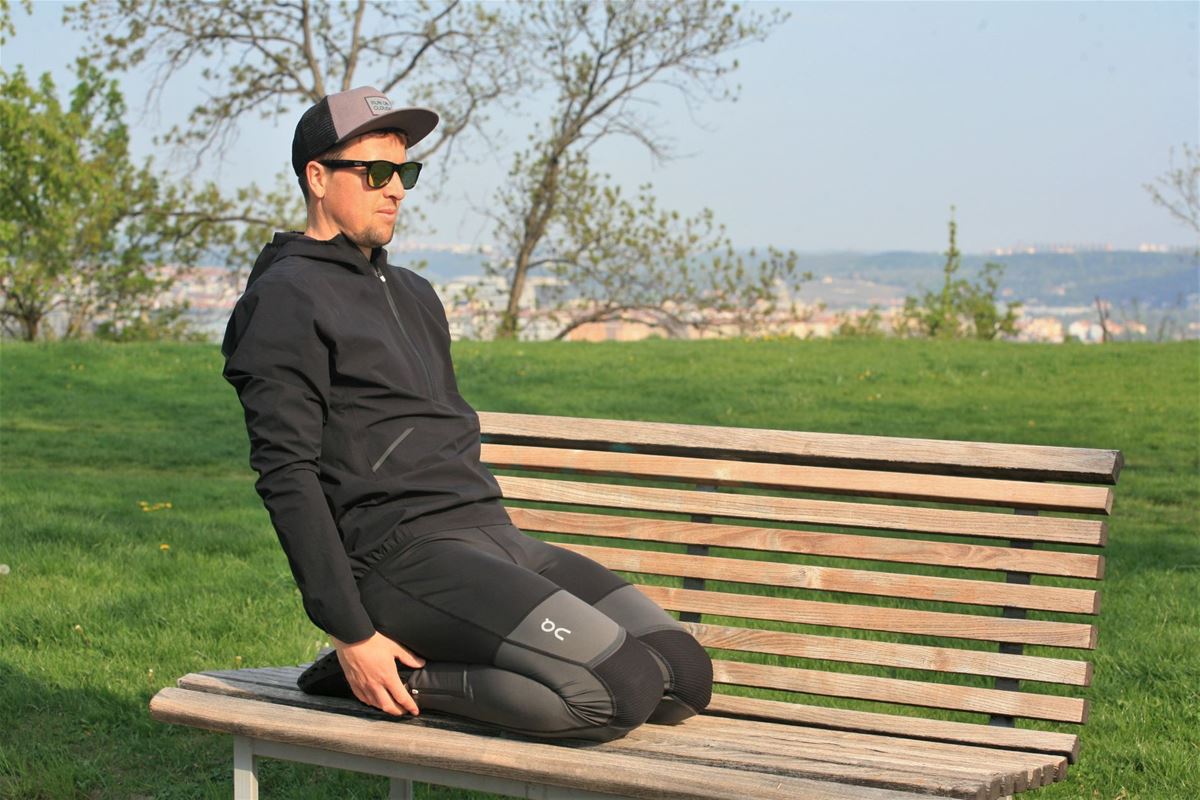
Overall spinal stretch
This stretch relaxes the sacral, lumbar, thoracic and cervical spine.
Lie on your stomach on the bench, place your elbows at shoulder level and push up on your forearms. From the spine, pull yourselves into the distance and slightly upwards, keeping the chest open. Gently push it forward, but do not forget about the hips. To keep them from sagging, we gently activate the abdomen, which keeps the internal organs close to the spine.
When stretching, it helps to imagine how the space between the individual vertebrae increases.
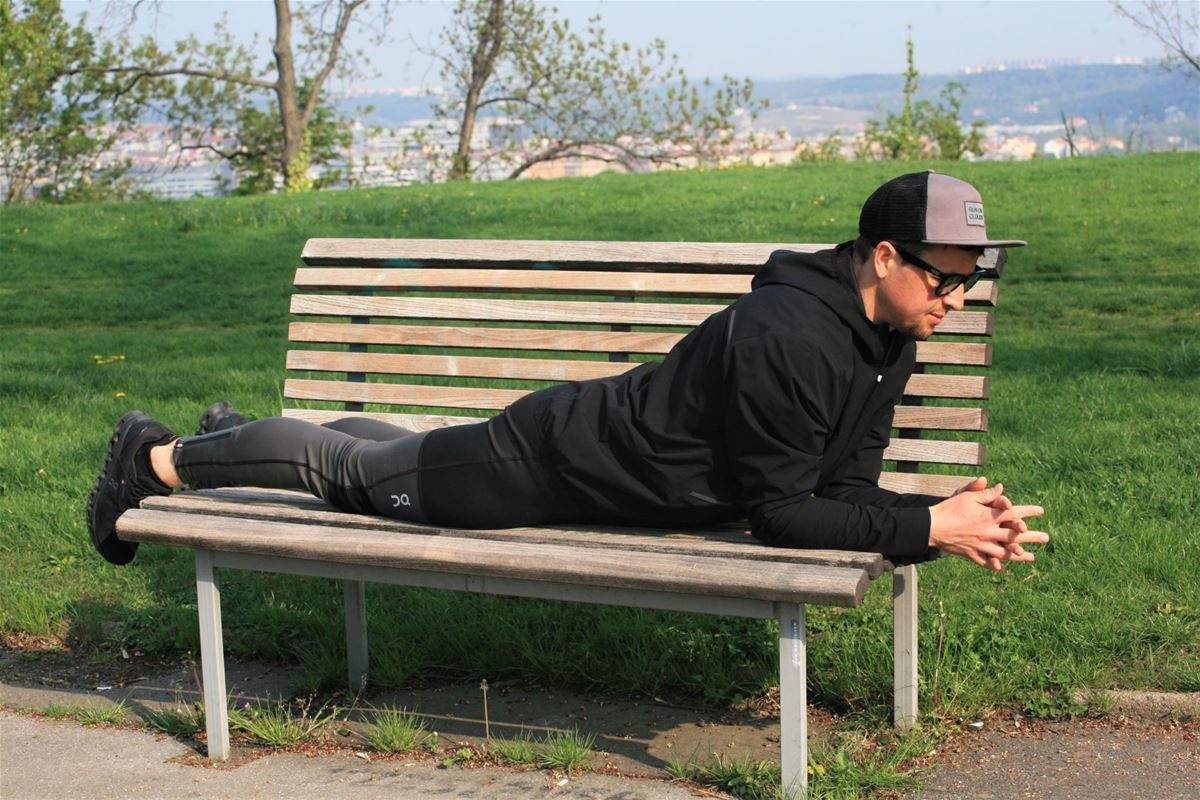
Stretching the fingers and forearm muscles
This exercise prevents the wrist flexors from stiffening, relaxes the forearm muscles and stretches the fingers.
Stand up straight, extend one arm so that the palm is facing upwards and bend the wrist downwards, helping yourself with the other hand by gently pulling the fingers towards the body. On the inhale, we can push with the hand being stretched against the other hand. On the exhale, we release. Repeat several times and then switch hands.
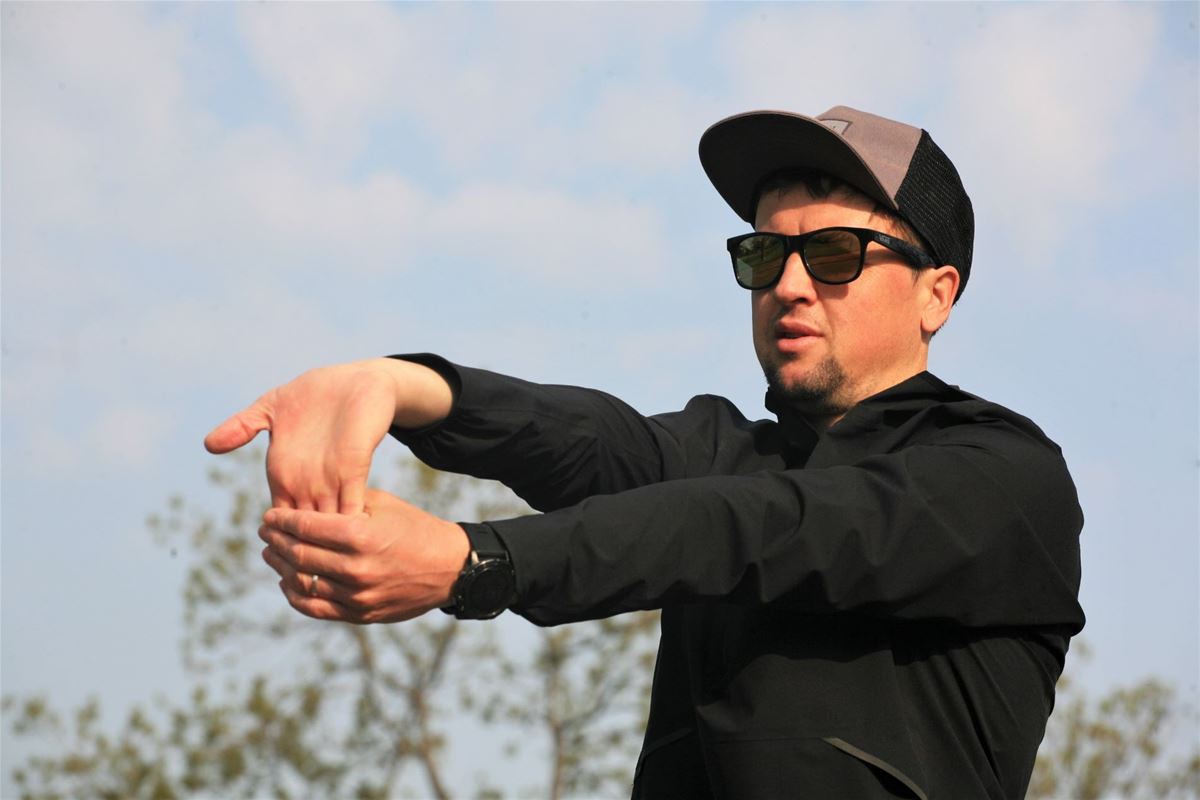
Perfecting technique
“After the stretching comes the ideal moment for perfecting your technique. We are warmed up, stretched and relaxed, as is our mind, which is ready to remember all the principles of good riding and anchor them in the body.
The ideal way is to always focus on one specific movement and train it, for example, in five rides lasting 1 minute each and then move on to the next principle, see riding technique.”
Improving performance
“Only now comes the actual training, which focuses on improving performance. This part of the training should have a different focus each time, it should be fun and should hurt a little.
A repetitive route and the same pace all the time does not make the body progress effectively. If you do not have a coach, challenge yourselves. For example:
- I will ride a 1 km long section five times as fast as possible
- I will ride 10 km without stopping
- I will ride up the next hill five times at the fastest possible pace and experiment with the number of push-offs without switching legs, etc.”
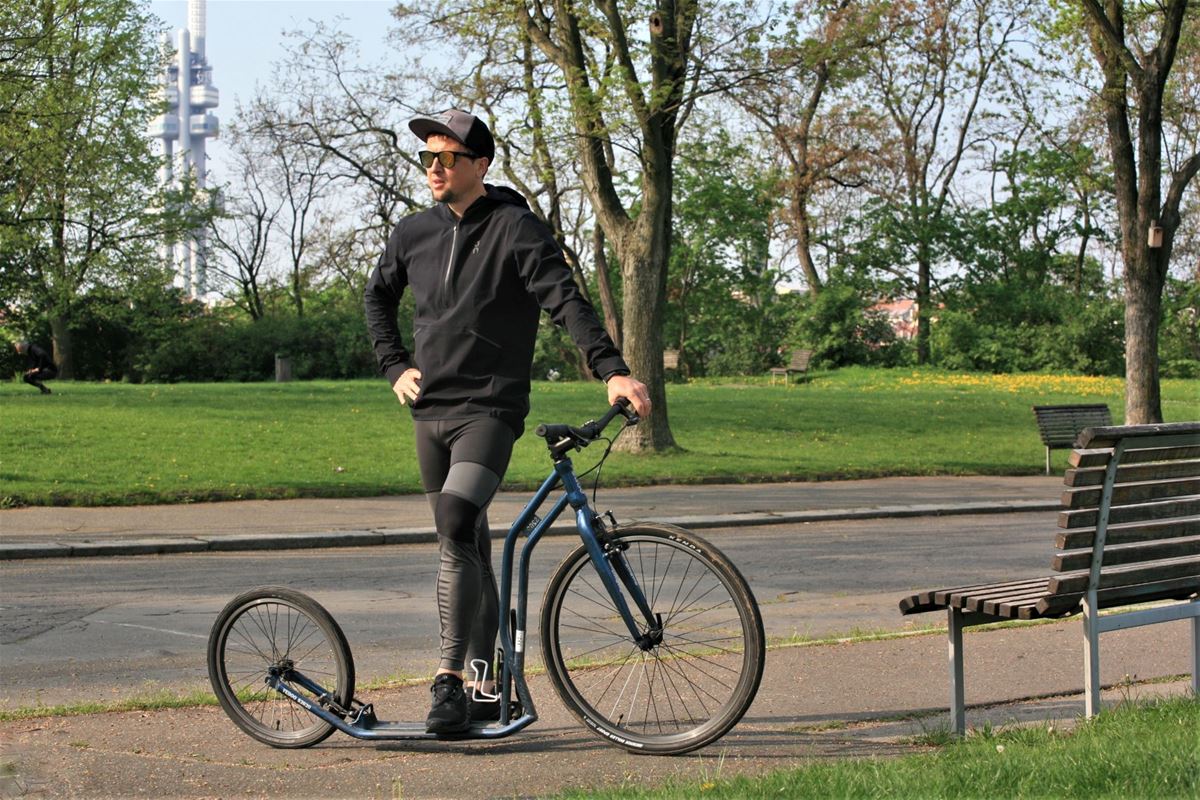
Final stretching and calming down
The end of the training should be dedicated to stretching and general relaxation. Static stretching while sitting or lying down, rotational exercises, yoga or breathing exercises are ideal to bring about general relaxation.
“If you do not have room for such a thing after physical activity, I recommend slowing down your pace to walking and enjoying the feeling of blissful fatigue and a job well done, before returning home or to your duties.”

